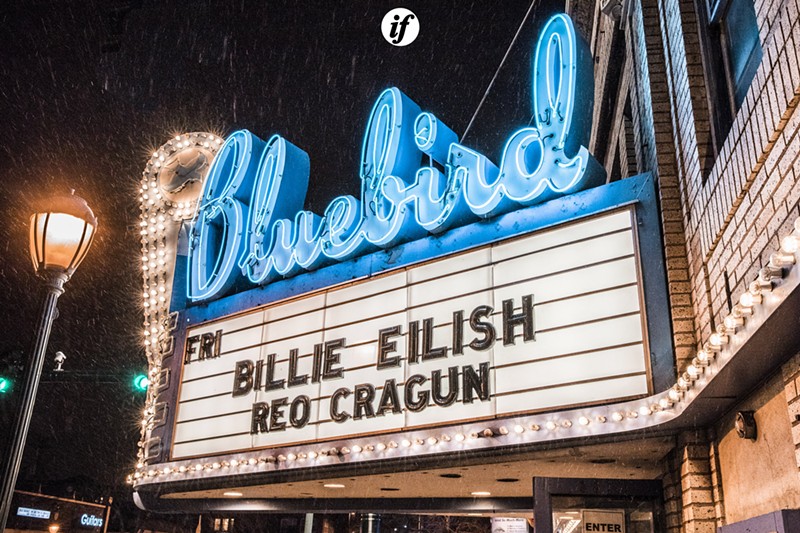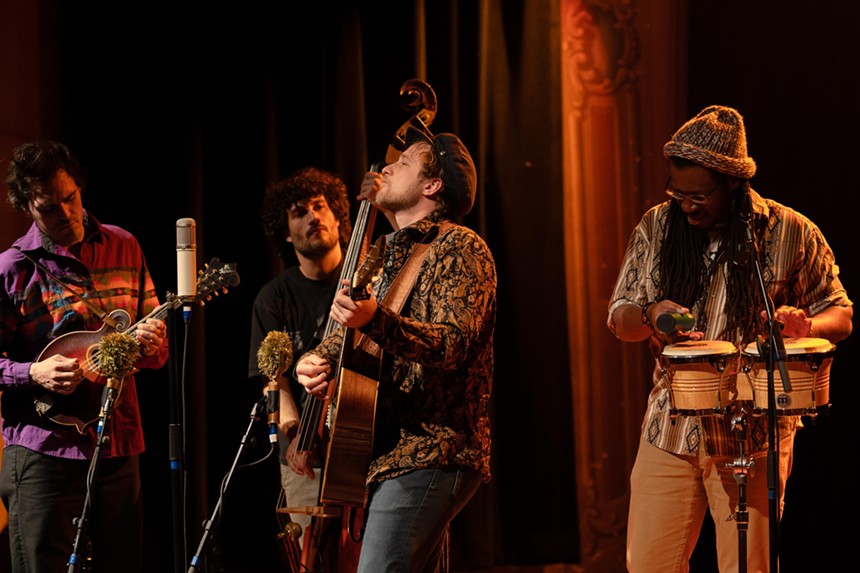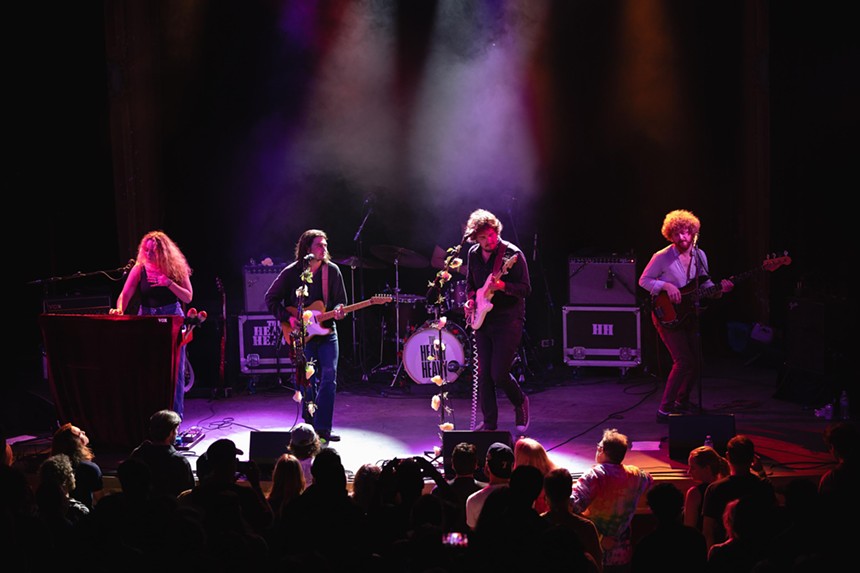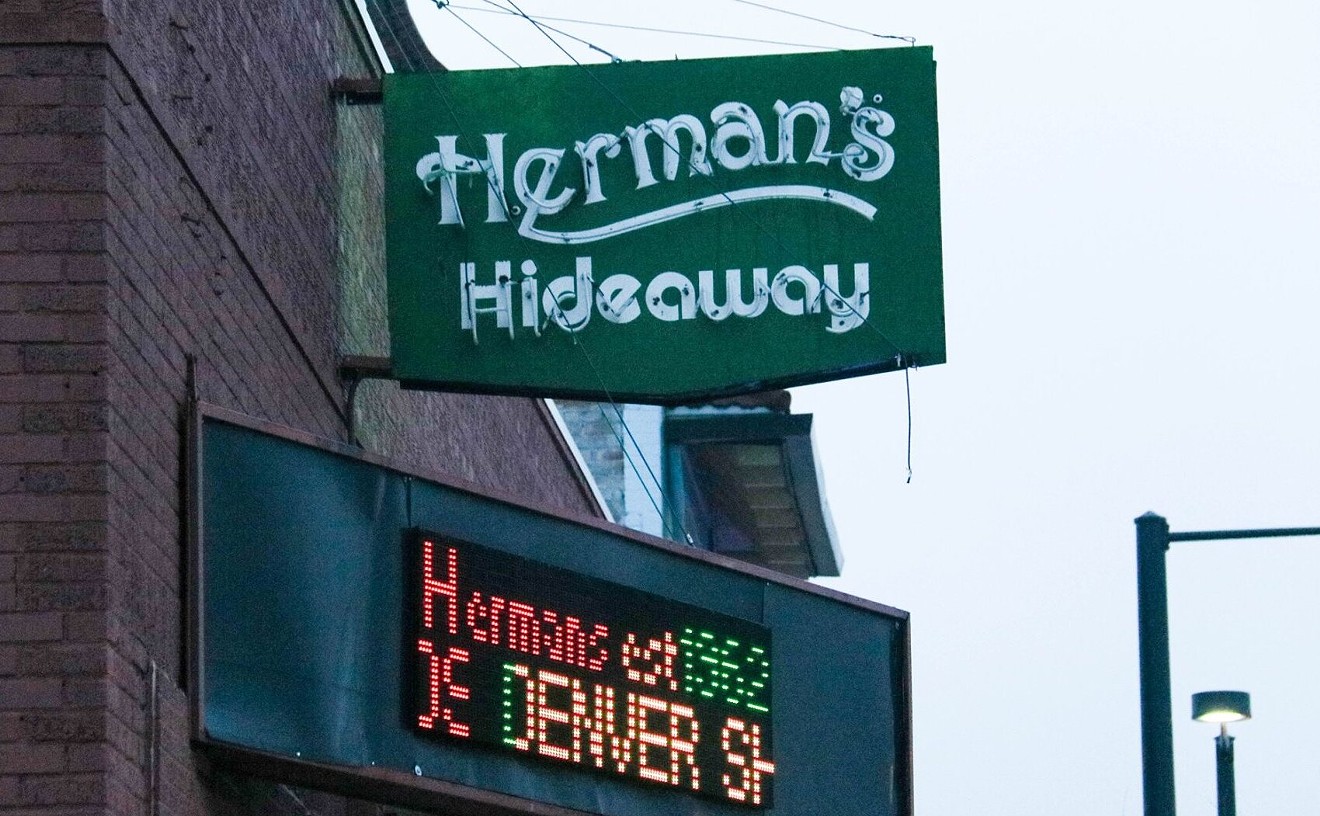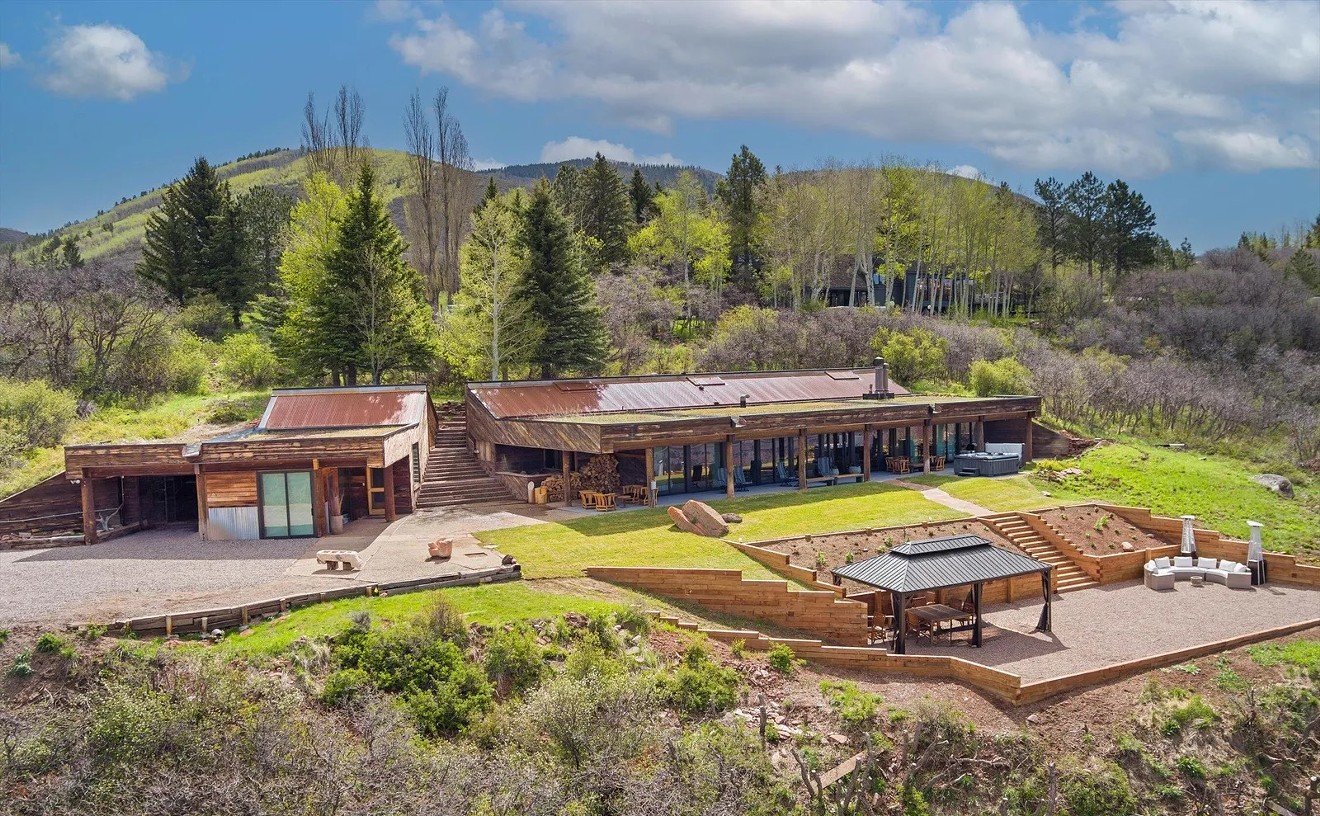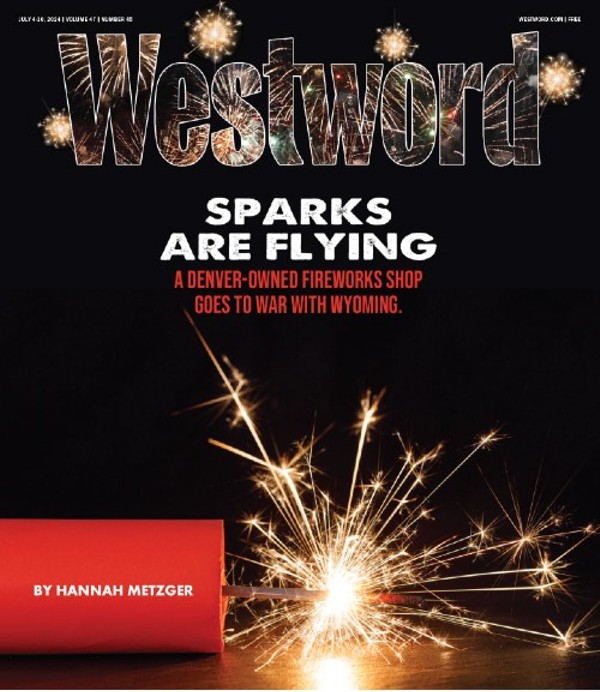"Our space is pretty small; we have 550 sellable tickets," says general manager Kevin Anderson. "When you fill this room up, there is no bad place to watch the show. We are a re-entry venue, so people can come and go as they please. It's the cornerstone of the Bluebird District, which is what this neighborhood is known as, and it creates a sense of community in the neighborhood. You know exactly what to expect when you come to this part of Colfax, and that drives a lot of the specialness of this room. The Bluebird Theater is a community-focused, intimate local venue."
Nestled between the Congress Park and City Park neighborhoods on East Colfax Avenue, the theater stands out as a beacon of live entertainment whose rich history echoes the evolution of American performance venues. Although the Bluebird name has become synonymous with the neighborhood, the building actually opened under a different moniker.
Originally dubbed the Thompson Theater after its founder, John Thompson — a successful local grocer and druggist who also owned the Ogden Theatre — it was designed by renowned Denver architect Harry W.J. Edbrooke specifically to show movies. Construction on the building began in 1913, and it opened on September 11, 1915, as a neighborhood movie house.
The theater underwent its first significant transformation during the Roaring Twenties. In the spring of 1921, Thompson sold it to Harry E. Huffman, a pharmacist who also owned the Bide-a-Wee movie theater on West Colfax. The new owner gave the space its current name in 1922, but it was known as the "Blue Bird Theater" for several years before finally settling on "Bluebird."
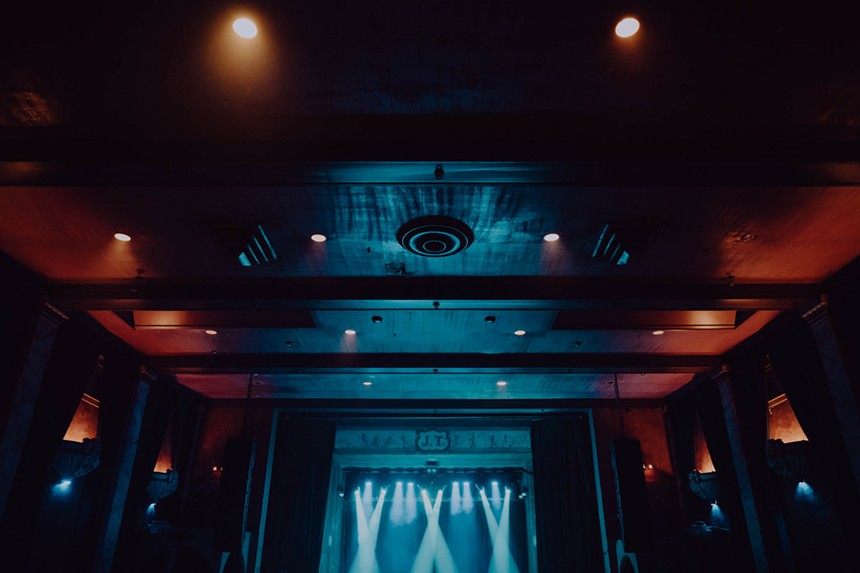
The Bluebird Theater’s intimate setting, with a capacity of five hundred fifty, has made it a cherished spot for both artists and audiences.
Courtesy of AEG Presents
The venue remained closed until 1994, when Chris Swank and his business partner, Evan Dechtman, invested in turning the building into a music venue.
"We decided to invest in the Bluebird because it was a dream of mine to do something related to music," Swank says. "As a huge fan and musician myself, I just wanted to do something in that field. When I saw the venue, I thought it was the coolest thing, so I decided to jump into it. I talked to Evan, who was the younger brother of a really good friend of mine and a guy I went to high school with, and he agreed and became smitten with the venue as well. From there, we just tried to figure it out. We were young guys that didn't know any better; otherwise, we probably wouldn't have invested, because it seemed like a risky move at the time."
The Bluebird's rebirth as a stage for musical performances marked a new chapter in its long history. The transformation was driven by a love of music and a vision for what the venue could become.
"It was kind of abandoned when we bought it, but once we started power-washing the walls and saw what was under there — the murals and beautiful architecture — I just fell in love with the room," Swank reminisces. "There's just something about it that's cool. It's got those old gargoyle lights, and I really liked the size of the room. It's big enough, but it's not too big, which is why it's my favorite venue to see a show in."
Their efforts were aided by financial support from the Mayor's Office of Economic Development, which recognized the project's importance in revitalizing the East Colfax Avenue corridor. Since reopening its doors on November 24, 1994, with headliner Lisa Loeb, the Bluebird has hosted an impressive roster of artists, from emerging talents to world-renowned acts seeking a more cozy performance space. Adele, Billie Eilish, the Lumineers, the White Stripes, Oasis, Portugal. the Man and Modest Mouse are just a few of the names that have graced its stage.
"It might be a small room, but it’s not a hundred-person cap bar; this is a real venue with 500-plus people that looks awesome when it’s filled up," Anderson notes. "The other great thing about the room is that it’s our first chance with bands but not our last chance; we usually get them on the come-up and come-down. A lot of bands settle back into the Bluebird after having played bigger, huge places later in their careers."
The venue's historical significance is not lost on those who manage and own it. It was listed on the National Register of Historic Places in 1997, a status that underscores its importance to Denver's architectural and cultural heritage.
"One of the main reasons we did that was economic, because they provided some tax credits, and those tax credits were key in financing that we're able to use to pay investors back," Swank explains. "It also assures that the Bluebird will always be a performance space, which is a great thing. Not that anybody would want to turn it into apartments or anything, but it assures that it'll stay a theater."
While Swank initially booked the venue through Nobody in Particular Presents (he's a partner in the company with founder Doug Kauffman), he struck a deal with AEG Presents in 2006 to take over both the Bluebird and the Ogden, which NIPP has been running ever since. This gave him time to focus on his other business ventures in the area, including Goosetown Tavern, Mezcal, La Rumba and Stampede.
"It's now a landlord-tenant arrangement," Swank explains. "AEG book and manage it; they've got so many good talent buyers, who do a great job of booking the Bluebird."
According to Anderson, one of his favorite parts about booking the room is that his team doesn't have to adhere to one particular style of music. The Denver market enjoys electronic music, so it books a lot of those acts, but the Bluebird offers "a little of everything," he says.
"There’s not one genre that we focus on," Anderson notes. "Electronic is an important part of our business because it sells a lot of tickets, but we do everything. We do country, showcases, jazz and hip-hop, and that comes from having eight guys in our office who book shows, so it’s not just one person’s taste. It makes the 180 shows we do a year feel very diverse."
Under the stewardship of AEG, the Bluebird Theater continues to thrive, playing a pivotal role in the revival of the surrounding Bluebird District. Swank and Dechtman helped create this district, leveraging the theater's name and influence to foster community development.
"Some great people are running that district, which ensures there's this concerted effort looking after the neighborhood and trying to use some of those property tax dollars to invest back in the neighborhood," Swank says. "With the Bus Rapid Transit line going down Colfax in the next few years, they're ensuring that the businesses and everything in that district are going to be treated positively, and it won't be negatively affected."
The theater’s resilience was tested during the pandemic, a challenging period that saw the suspension of live events worldwide. However, the Bluebird emerged from this period with a renewed sense of purpose and optimism.
"The pandemic was hard on everybody," Swank acknowledges. "Everybody had to make some kind of sacrifice when that was going on, but since then, it's been extremely strong. All of the artists that were sidelined wanted to get back out on the road and start making money. The year after we fully came back — 2022 — was a solid year. … I think things are pretty much back to normal. Maybe some of the mask-wearing you’ll still see a little bit of, but more than anything, it's just fortunate everybody was able to weather it."
From its origins as a movie house to its current status as a cherished music venue, the Bluebird has survived a myriad of changes while remaining a staple in the entertainment community for over a century. Its story is a testament to the vision of its founders, the dedication of its managers, and the passion of the artists and audiences who have walked through its doors.
"The Bluebird is special for me because it’s one of the first business projects I ever took on," Swank reflects. "It’s just been a great experience, and it’s amazing that it still has the impact that it does today."
Learn more about the Bluebird Theater and its upcoming shows at bluebirdtheater.net.

